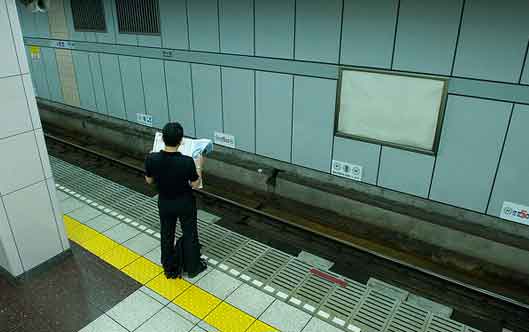In Ernest Hemingway's The Sun Also Rises, a character is asked how he went bankrupt. "Two ways," he says. "Gradually, then suddenly."
In my experience covering innovation for nearly three decades, that's how disruption has come to a host of industries: IT, newspapers, books, retail, music, etc. What I think of as the Hemingway model for disruption -- gradually, then suddenly -- is thus how I expect transformation to come to the four main areas that have yet to see huge changes driven by IT: healthcare, higher education, government and our favorite, insurance.
If history is any guide -- and it usually is -- many insurance executives will miss the warning signs and be caught unawares, just as executives in other industries have been. In 1997, my frequent co-author, Chunka Mui, and I sat in the office of the CEO of Sears and tried to convince him that the gradual change he was then seeing in retail would become sudden once the Internet matured. We argued that he should search for a new business model, using Sears' brand name and experience with tools and appliances to become the nation's handyman. He demurred, convinced that the "sudden" part of disruption wasn't coming. That same year, we sat down with the president of a very large distributor of music and told him that "sudden" was just around the corner because of MP3 players. We argued that he should sell the business and run for the hills. He, too, was unconvinced.
Even though insurance executives now have two decades of disruption in other industries as evidence, I'm seeing many focus on the "gradual" part of Hemingway's formulation and hoping that "suddenly" either isn't coming or doesn't hit until after they've safely eased into retirement.
I came across an article the other day by an old friend and colleague of Chunka's and mine that takes a different tack and offers some concrete ways to monitor for disruption -- or, rather, for what the article, How Old Industries Become Young Again, calls the "dematuring" of an industry. The author, John Sviokla, was a partner of ours at Diamond Management & Technology Consultants, now part of PwC. Before that, he was a professor at Harvard Business School, where he co-wrote a thoroughly prescient piece in Harvard Business Review in the early 1990s (years before most of us even discovered the Internet) that described the contours of what the authors then referred to as the "marketspace" and that we now think of as e-commerce.
In describing how to watch for coming problems and opportunities, Sviokla writes, "What most industries experience as disruption is typically not a sudden change from one source, but the accumulated impact of a range of interacting factors. If you want to be prepared for disruption, it's critical to understand the more gradual, prevalent and multifaceted dynamic that underlies it: a phenomenon called dematurity....You can think of dematurity as a crescendo of mini-disruptions that add up to great effect."
He says to look for changes in five areas, to understand how rapidly the industry will change and to see how to prepare:
- New customer habits
- New production technologies
- New lateral competitors
- New regulations
- New means of distribution
Because Sviokla only touches on insurance, I'll channel my inner John and offer some thoughts on the five areas, three of which are clearly dematuring the industry and a fourth of which seems to be well on its way.
New customer habits
This is clearly an area of change. The discussion among insurers mostly concerns Millennials, and that's fair enough as far as it goes, but the issue is much broader. All sorts of customers have come to expect more transparent pricing and convenient service because of the examples that Amazon and other e-commerce giants have set. Mobile technology drives even more changes in customer behavior, increasing demands for immediacy, among other things. Other technologies, such as health-related wearables, are catching on, with consequences that are unclear at this point but that could be profound. Demographics are changing, and not just because of Millennials. And so on.
New Production Technologies
Another area of clear change. The inputs that can go into the writing of an insurance policy are exploding -- cameras, sensors, previously unscrutinized notes from salesmen, from customer service reps, from social media, you name it. Silos within companies mean that insurers can't yet take full advantage of the new inputs, but change is coming. Agile production technologies will soon mean that it won't take six to eight months to get a new product to market. It will take six to eight weeks or even six to eight days.
New Lateral Competitors
There has been lots of speculation. Is Google coming? Facebook? Amazon? Will there be an Uber of insurance? Some other start-up that revolutionizes the industry? The answers are still a bit unclear, but it seems to me that new competitors are emerging and that the pace will pick up. You can already see effects in reinsurance, where some risks can be so fully quantified that they are being covered in the capital markets rather than through traditional insurers.
New Regulations
Obamacare has certainly shaken up parts of the health insurance market, but, in general, regulations will slow the dematuring of insurance, not accelerate it.
New Means of Distribution
This will take a while to sort out, but at least parts of the sales process will go direct -- the agent may still advise on the content of the policy but won't handle as many logistical details. The increasing reliance on mobile devices will accelerate the move to direct interactions with insurers.
However, you see Sviokla's checklist of five areas to watch, I'd encourage you to read his article. A lot of the discussion about the potential for disruption can get emotional -- The British are coming! The British are coming! No, they're not! No, they're not! -- but John, as usual, has managed to take a dispassionate, scholarly look at the issues.






















